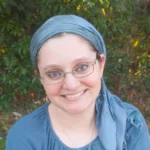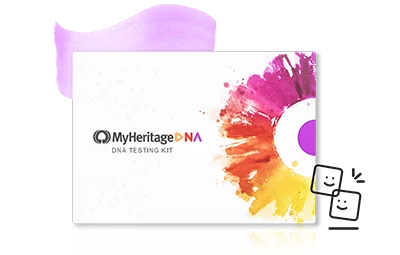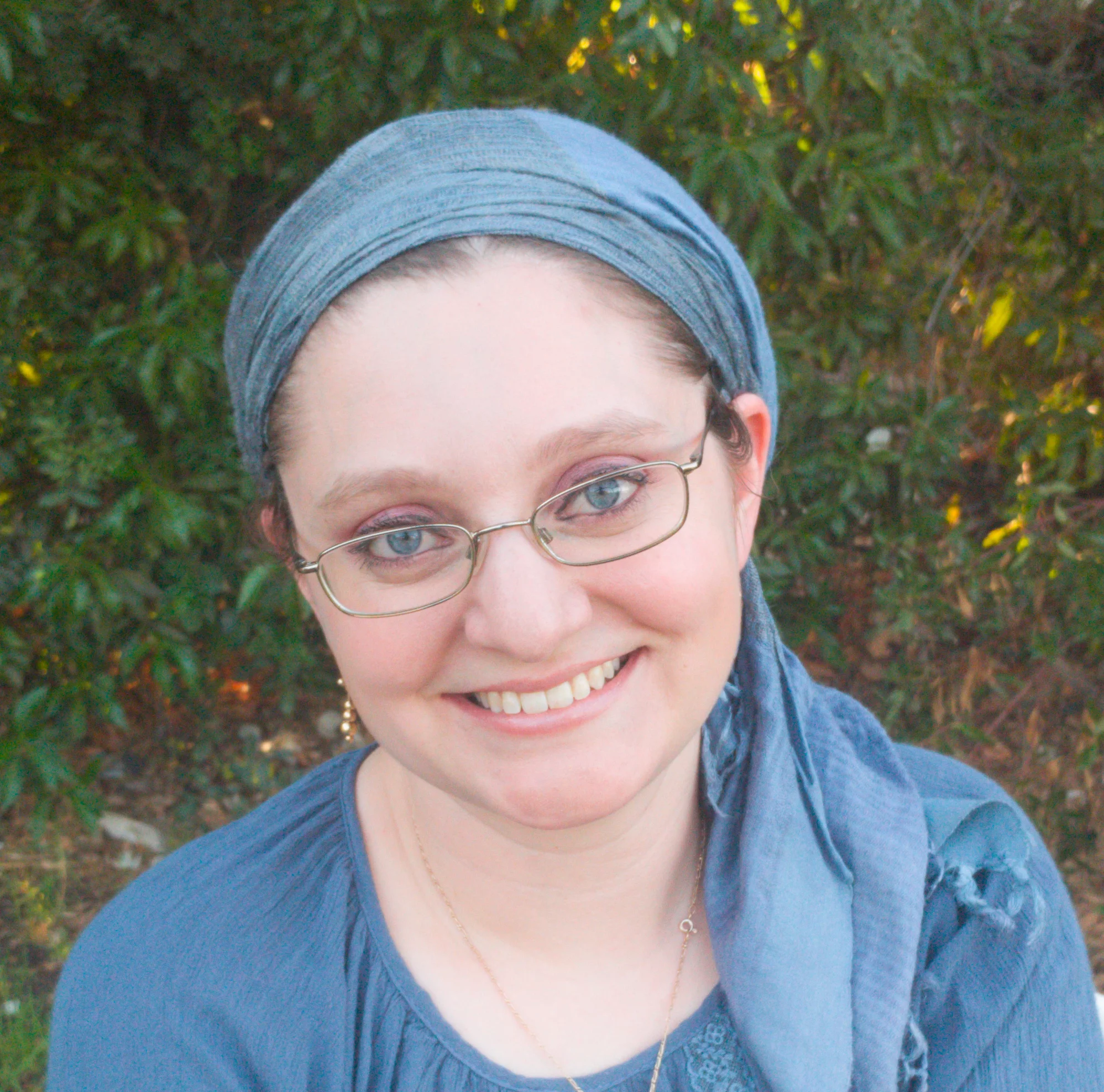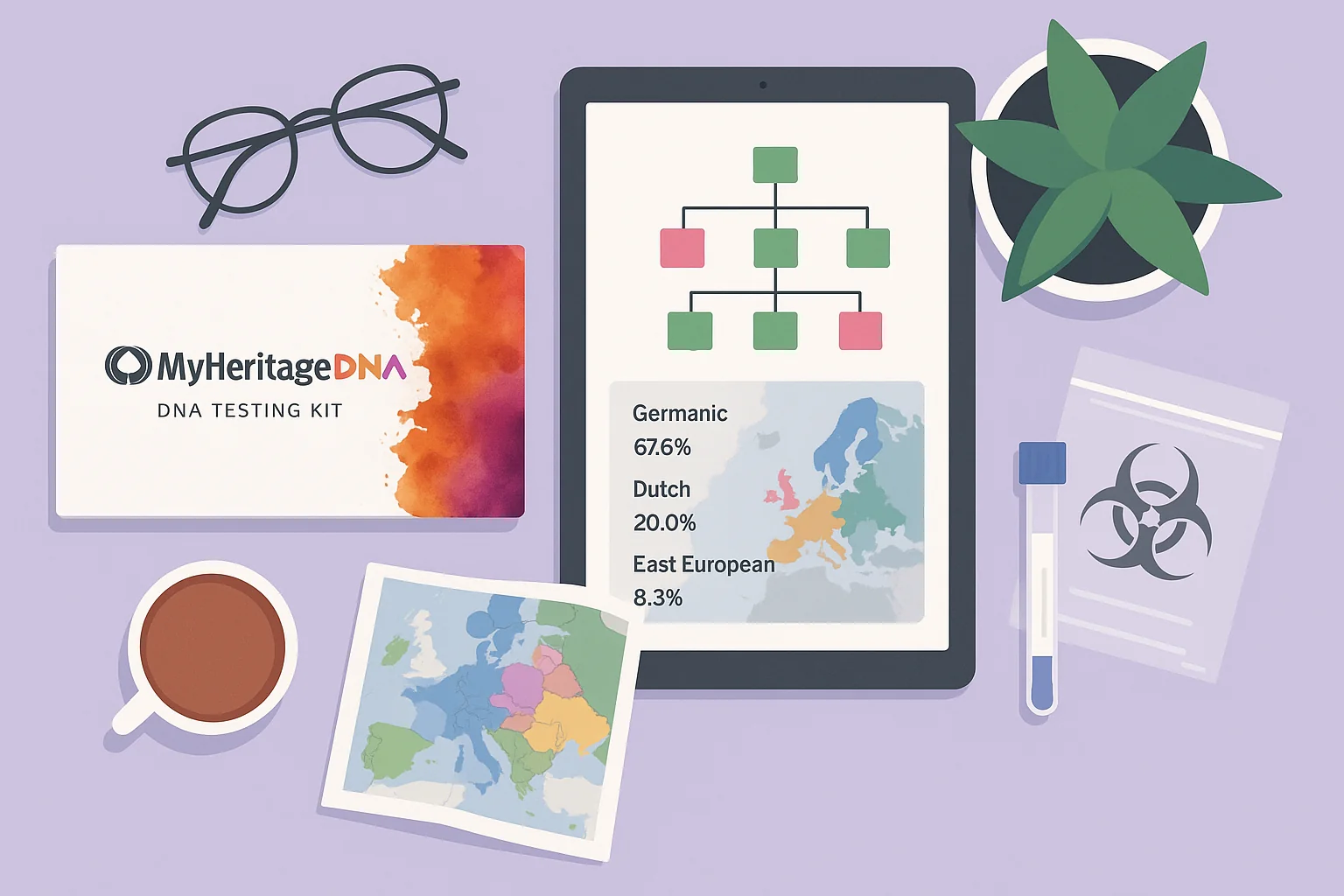
The introduction of DNA testing for genealogy has opened a whole new world of possibilities to family history researchers. With just a simple cheek swab, people around the globe are discovering connections that were once thought lost to time — and finding new ways to explore who they are and where they come from. Whether you’re just starting out or have been researching your family for years, DNA can offer surprising insights and meaningful breakthroughs that traditional records or oral history alone can’t always provide.
DNA testing can help you enrich your family tree, learn more about your ethnic and geographic origins, and even uncover relatives you never knew you had. For those with gaps in their family history, like adoptees or people with unknown parentage, DNA can offer answers that no other source can. As of 2025, more than 40 million people worldwide are believed to have taken at-home DNA tests — and as more people test, the chances of making new discoveries continue to grow.
This guide will walk you through everything you need to know about DNA testing for genealogy and family history: how it works, what it can tell you, and how to use it alongside your existing research. You’ll learn about the different types of tests, how to interpret your results, and what to consider when choosing a service. We’ll also cover emotional and ethical aspects, so you’re prepared for whatever you might discover.
No matter where you’re starting from, DNA can help bring your family’s story into sharper focus — and maybe even introduce you to new chapters you never imagined you’d unfold.
DNA testing for family history
Family history researchers turn to DNA testing to discover where their ancestors came from, how they migrated, and how different branches of their family connect. DNA can add an additional layer of evidence where traditional genealogical methods sometimes fall short, such as missing documents, inaccuracies in historical records, or lack of oral history.
There are three main types of DNA tests used in genealogy. Each offers different kinds of insights:
Autosomal DNA
Autosomal DNA is the most widely used type of DNA test for genealogy and is available from all major consumer testing companies. It analyzes the 22 pairs of chromosomes you inherit from both parents (autosomes) and reflects a mix of your recent ancestry from all family lines. It connects you with relatives on both sides of your family with a common ancestor going back around 5–7 generations.
Mitochondrial DNA (mtDNA)
Mitochondrial DNA (mtDNA) is passed down from mothers to all their children, but only daughters pass it on to the next generation. This means mtDNA traces a direct maternal line — your mother, her mother, her mother’s mother, and so on. mtDNA can still help identify people who share a common maternal ancestor and confirm or rule out shared maternal-line heritage. It’s especially useful in cases where that line is difficult to document through historical records.
Y-DNA
Y-DNA is passed exclusively from father to son, making it useful for exploring direct paternal lineage. It can reveal connections between men who share a common male ancestor — often with the same or similar surnames — and is ideal for surname studies and confirming paternal lines when traditional documentation is lacking. Y-DNA testing is only available to biological males, though females can ask a male relative to test on their behalf.
How DNA helps in genealogy
While mtDNA and Y-DNA offer deep, line-specific insight, they only reflect a small fraction of your total ancestry. In contrast, autosomal DNA casts a much wider net, capturing inherited material from hundreds or even thousands of ancestors. This makes it ideal for genealogical research that aims to map out a broad family tree, find living relatives, or verify suspected relationships.
| Autosomal DNA | mtDNA | Y-DNA | |
| Who Can Test | Everyone | Everyone | Biological males only |
| Inherited From | Both parents (mixed inheritance) | Direct maternal line only | Direct paternal line only |
| Generations Covered | 5–7 generations (recent ancestors) | Deep maternal ancestry (thousands of years) | Deep paternal ancestry (thousands of years) |
| Helps Identify | Close to distant cousins, recent ancestors | Ancient maternal origins, haplogroups | Ancient paternal origins, surname lines |
| Best For | Building recent family trees, DNA matching | Exploring maternal lineage | Tracing paternal surname lines |
DNA testing also enables you to confirm or revise your documented research. If you match with known relatives at expected levels, that strengthens the credibility of your tree. Unexpected results — like matches to people with unfamiliar surnames or in surprising locations — can point to family branches you haven’t discovered yet or cases of misattributed parentage.
Today’s testing platforms make it easier than ever to interpret DNA results. Many services, including MyHeritage, provide match lists, chromosome browsers, shared match tools, and cluster algorithms to help you visualize and verify genetic relationships. We’ll explore these in greater detail below. Combined with traditional sources, DNA provides a powerful toolkit for exploring your heritage and better understanding the people who came before you.
Understanding your ethnicity and cultural heritage with DNA
For many people, one of the most exciting moments after taking a DNA test is receiving their ethnicity estimate: that colorful breakdown showing percentages from regions around the world. MyHeritage elevates the moment by providing a fun animation that reveals each ethnicity with a little melody capturing the essence of that ethnicity’s culture.

It’s important to keep in mind that the Ethnicity Estimate is just that: an estimate. Still, it offers a fascinating glimpse into your ancestral origins and can help shape your understanding of cultural identity, migration, and heritage in a way that feels personal and profound.
How ethnicity estimates work
MyHeritage and other DNA testing services estimate your ethnicity by comparing your DNA to reference panels: large datasets made up of DNA samples from individuals with long-standing roots in particular geographic regions. These reference populations serve as genetic benchmarks. The testing company’s algorithm scans your DNA for segments that resemble those in the reference populations and calculates the percentage match for each region.
Because the algorithms, reference datasets, and regional definitions vary by company, results may differ depending on which platform you use. You might see slightly different percentages or even different regions represented. These differences don’t mean one is wrong and the other is right — they reflect the complexity of population genetics and the proprietary methods used to interpret your data.
MyHeritage offers one of the most detailed ethnicity estimates available with results covering 79 ethnicities and 2,114 geographic regions.
What ethnicity estimates can and can’t tell you
It’s best to think of your Ethnicity Estimate as a general overview rather than a precise map of your family tree. It can’t tell you exactly which of your ancestors contributed which percentage of DNA. Instead, the estimate reflects the likely geographic origins of your ancestors going back hundreds of years — often aligning with broader population movements and cultural groups.
That said, the estimates can be surprisingly detailed. MyHeritage’s Ethnicity Estimate can offer regional-level insights, distinguishing between areas like northern and southern Italy. The Genetic Groups break your origins down even further, pinpointing genetic ties to areas as specific as a county or town. These distinctions can help support research hypotheses, guide your next steps in historical record searches, or validate oral family traditions.
Cultural identity and personal meaning
For many testers, especially those with mixed backgrounds or gaps in their known family history, ethnicity estimates can be profoundly meaningful. They can provide a starting point for exploring unfamiliar cultures, learning new languages, or connecting with historical events and diasporas that shaped their ancestors’ lives.
Ethnicity results can also highlight the complexity and diversity within a family. A single individual’s estimate might include heritage from 5 or more regions, each representing different migration paths, marriages, and historical contexts. This complexity often reflects the richness of human history.
Admixture, updates, and changing results
It’s important to understand that ethnicity results are not static. As databases grow and algorithms improve, companies regularly update their reference panels. This means your estimate might change over time. A percentage may go up or down, or a new region may be added. These updates reflect better data, not changes in your actual DNA.
Additionally, ethnicity estimates reflect admixture: the blending of different populations over time. This blending can make it difficult to neatly separate your DNA into clean geographic categories. Read more about why an expected ethnicity might not show up here: Where’s My Ethnicity?!: Why An Ethnicity Might Not Show Up In Your DNA
Beyond the percentages
Ultimately, ethnicity estimates are just one part of the DNA testing experience. They’re engaging and fun, but they gain the most value when combined with other tools — like DNA Matching, historical records, and oral history. Used together, these elements can help you paint a fuller picture of your family’s journey and the cultures that shaped who you are today.
Explore your origins with a MyHeritage DNA test>>
Connecting with living relatives
One of the greatest benefits of DNA testing is the discovery of living relatives. When you take a DNA test, you’ll be matched with people in the company’s database who share genetic material with you, ranging from close family to distant cousins several generations removed. Beyond the opportunity to connect with family members you may never have met before, these DNA matches can provide critical information, help verify family tree connections, and uncover entire branches of a family that would otherwise remain hidden.
How DNA matching works
When you take a DNA test, your raw genetic data is compared to that of others in the same company’s database. The testing algorithm looks for long, identical stretches of DNA — shared DNA segments — which indicate a recent common ancestor. The amount of DNA you share (measured in centimorgans, or cM) helps estimate how closely you’re related.
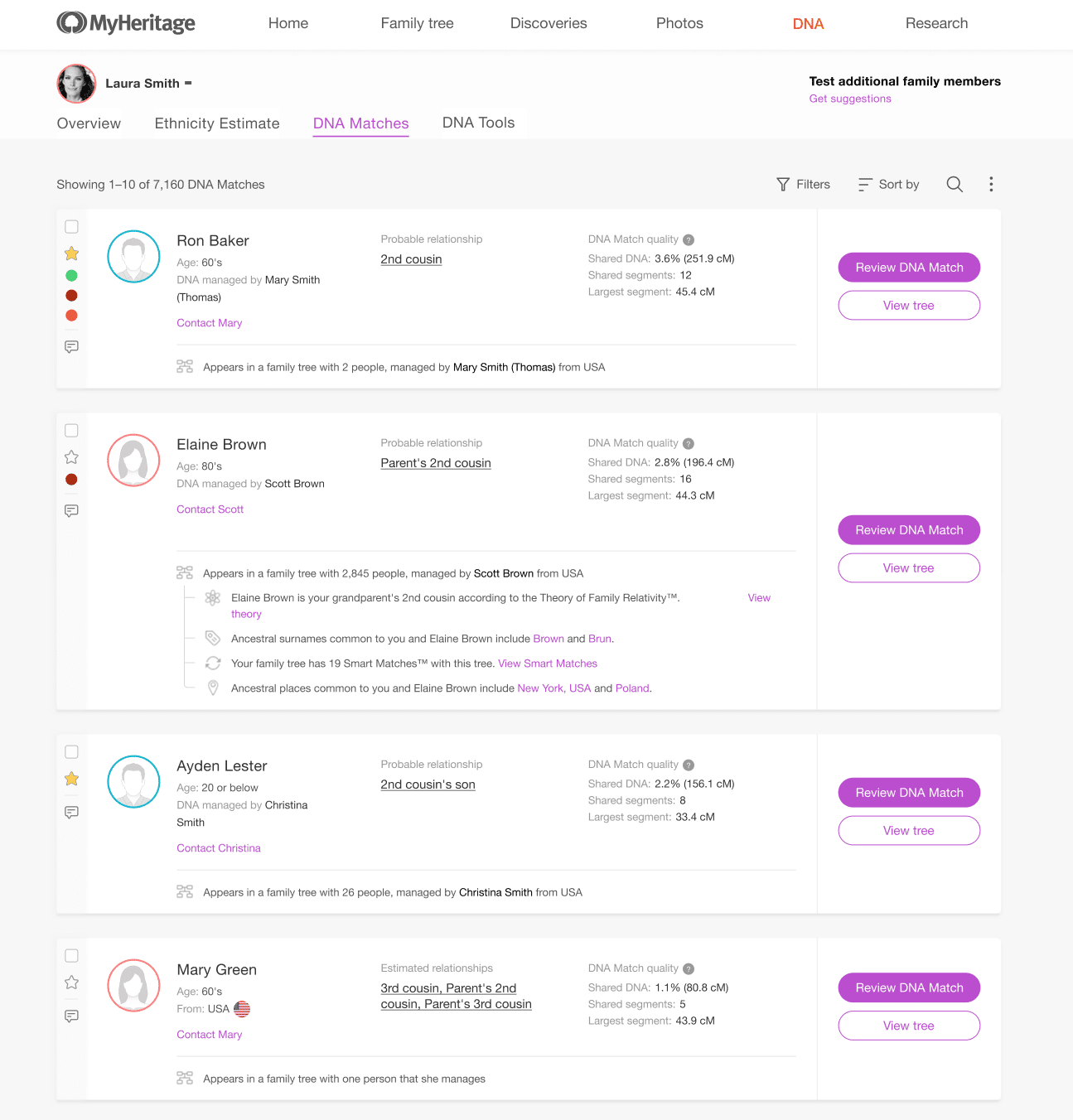
For example, siblings typically share about 2,500–3,500 cM, while first cousins share around 800 cM. Matches under 100 cM might indicate a more distant connection, such as a fourth cousin. Most companies provide estimates to help place your matches in the right tier, along with tools to sort and filter them by relationship. MyHeritage’s estimate is calculated using not only the amount of shared DNA, but also the ages of the individuals being matched, making it the most precise shared-DNA-based relationship estimator available.
DNA match estimated relationships
Understanding how much DNA you share with a match can help you estimate your relationship more accurately. DNA testing companies provide relationship suggestions, but it’s helpful to see the typical ranges and probabilities for yourself. The chart below shows common relationship categories alongside the average and possible ranges of shared DNA in centimorgans (cM) — a unit used to measure genetic distance.
| Relationship | Typical Range (cM) | % Shared DNA |
| Parent / Child | 3,300–3,730 | ~50% |
| Full Sibling | 2,300–3,300 | ~50% |
| Half Sibling | 1,160–2,360 | ~25% |
| Grandparent / Grandchild | 1,220–2,180 | ~25% |
| Aunt / Uncle / Niece / Nephew | 1,300–2,300 | ~25% |
| First Cousin | 575–1,330 | ~12.5% |
| Half First Cousin | 215–650 | ~6.25% |
| Second Cousin | 75–360 | ~3.125% |
| Third Cousin | 30–215 | ~0.78% |
| Fourth Cousin | 15–100 | ~0.20% |
| Distant Cousin (5th+) | 6–20 (or less) | <0.1% |
Note: These ranges are based on aggregated data from thousands of tested relationships and should be considered guidelines, not guarantees. The amount of DNA shared can vary due to random recombination, pedigree collapse, and other factors.
Why database size — and diversity — matters
The usefulness of DNA matching is directly tied to the size and makeup of the testing company’s database. The more people in the database, the greater your chances of finding a relevant match. But size isn’t the only factor: diversity matters as well. If you’re researching roots in a specific region or population, you need a company with strong representation from those areas.
This is where MyHeritage stands out. While other major testing companies focus primarily on the U.S. market, MyHeritage has built one of the most internationally diverse DNA databases in the world, with especially strong coverage in Europe. That makes it particularly valuable for users with non-U.S. heritage or recent immigrant backgrounds.
Even one close match in a region where records are scarce — such as Eastern Europe or North Africa — can open doors that paper trails alone cannot.
MyHeritage users have made extraordinary discoveries through DNA matching. Some have found half-siblings they never knew existed; others have reunited with relatives separated by immigration, war, or adoption.
We’ll explore some of these real-life discoveries below.
How DNA helps solve genealogical mysteries
DNA testing has revolutionized genealogy by providing tools to uncover family secrets, resolve long-standing questions, and connect with previously unknown relatives. Let’s explore some true stories of people who were able to make genealogical breakthroughs thanks to the power of DNA.
Anne found her birth father thanks to a 3% DNA match
Anne Angot, adopted as a baby from Vietnam by a French family, grew up with no information about her biological roots — until she took a MyHeritage DNA test. She received a 3% match with a cousin in the U.S., which led to the discovery of her biological father: Theo Vann, an American army veteran who had been stationed in Vietnam in the early 1970s. He had no idea he had fathered a child during his time there. After the DNA test confirmed their relationship, Anne and Theo were joyfully reunited, first in Georgia, then again in Paris. For both, the connection was life-changing. “I feel like a new person,” said Anne. “It’s reassuring. It’s a real comfort.” Their story underscores the profound impact DNA testing can have — not only in providing answers, but in creating opportunities for long-awaited healing and family connection.
Watch her story in the video below:
Read the full story here: Thanks to MyHeritage DNA, A Father Reunites with the Daughter He Never Knew He Had
Petra healed generational wounds thanks to DNA
Petra Charlotte Larsson — a user born in Hungary and raised in Norway — tested with MyHeritage and received a DNA match with a man from her hometown. That match revealed a long-standing family rift: their grandparents had been siblings who fell out over land and never spoke again. But that wasn’t all. A second, even closer DNA match led Petra to Andrea, a woman living in Germany who looked strikingly like Petra’s late grandmother. The match helped Petra uncover a hidden family secret: that her great-grandfather hadn’t died young, as she’d been told. Instead, he had abandoned his family, crossed the Hungarian-Slovakian border, and started a new one. Andrea turned out to be the daughter of Petra’s grandmother’s half-sister — a branch of the family no one had known existed.
Read the full story here: Healing Generations-Old Family Wounds with MyHeritage DNA
Jessica and her aunt solved a 100-year-old family mystery
Jessica Stanmeyer and her Aunt Sharyn solved a 100-year-old family mystery using MyHeritage DNA. Jessica’s grandmother, Sanie, was born to an unwed mother who claimed that a man named Roy Allie was her father — a story that later proved false. After DNA testing revealed unexpected Finnish ancestry, Jessica and Sharyn used MyHeritage’s AutoClusters tool and family tree comparisons to narrow down potential candidates.
Their search ultimately led them to Johannes Pakarinen, a Finnish immigrant who had abandoned his family in Michigan in the early 1900s. Through a series of DNA confirmations — including matches with descendants of Johannes’s siblings and other relatives — they gathered enough evidence to confirm his identity as Sanie’s biological father. What began as a family rumor turned into a multi-generational discovery, made possible through DNA technology and MyHeritage’s global genealogy community.
Read the full story here: My Aunt & I Solved the 100-Year-Old Mystery of My Great-Grandfather’s Identity
Shalom, rescued as a toddler during the Holocaust, finally found the family he knew nothing about
Shalom Korai was just two years old when he was found wandering the streets of the Warsaw Ghetto during the Holocaust and was smuggled out. Separated from his family and stripped of his identity, he survived the war as an orphan with no knowledge of his real name, origins, or relatives. More than 80 years later, a MyHeritage DNA test connected him with Ann Meddin Hellman, a second cousin living in South Carolina, whose family had long believed Shalom’s entire branch had perished. The connection revealed that he was the grandson of Ann’s great-uncle.
Watch his story in the video below:
Shalom traveled to the United States to reunite with his long-lost family after so many years of having no biological family at all — and received the gift of a religious heirloom. After decades of not knowing where he came from or who he belonged to, he finally had names, connections, and living family.
Read the full story here: Orphaned Holocaust Survivor, 83, Reunites with the Family He Never Imagined He Had
Expanding and validating your family tree
Even when you don’t have 100-year-old mysteries or tragic separations in your family’s past, DNA testing can be an essential tool for supporting and improving your family tree. DNA offers a way to both confirm existing branches and uncover new ones — especially when documentation is missing or inconclusive. With the right tools, DNA becomes a powerful cross-check that strengthens your research and extends it into new territory.
Using DNA to confirm relationships in your tree
DNA can validate the relationships already present in your family tree. For example, if a relative you’ve identified as a third cousin shares the expected amount of DNA — typically around 75–100 centimorgans (cM) — that result supports your research. When multiple matches all descend from the same ancestral couple and share DNA with you and each other, it increases the confidence that your tree is accurate.
This is especially helpful when evaluating close relationships. Shared DNA can help clarify whether two people are full siblings, half siblings, or first cousins — distinctions that are sometimes obscured by family silence or lack of records. In cases where the DNA doesn’t support an expected connection, it may indicate misattributed parentage, undisclosed adoptions, or other discrepancies that require further investigation.
Triangulating DNA segments — identifying overlapping DNA shared by three or more people who all descend from the same ancestors — adds another layer of confirmation. This can be done with a Chromosome Browser such as the one available on MyHeritage.

Adding new branches with the help of DNA matches
DNA testing can also help you identify relatives you weren’t previously aware of, and these new connections could lead you to previously unknown branches of your family tree. For example, if you match with a second cousin whose tree extends further than yours on a shared great-grandparent’s line, you can use that cousin’s research to expand your own.
Shared matches — people who share DNA with both you and another match — are another key resource. If several of your matches are also related to one another, it’s a good indication that you all share a common ancestor. MyHeritage’s AutoClusters tool visualizes this by grouping matches into color-coded clusters that typically represent descendants of a specific ancestral couple.
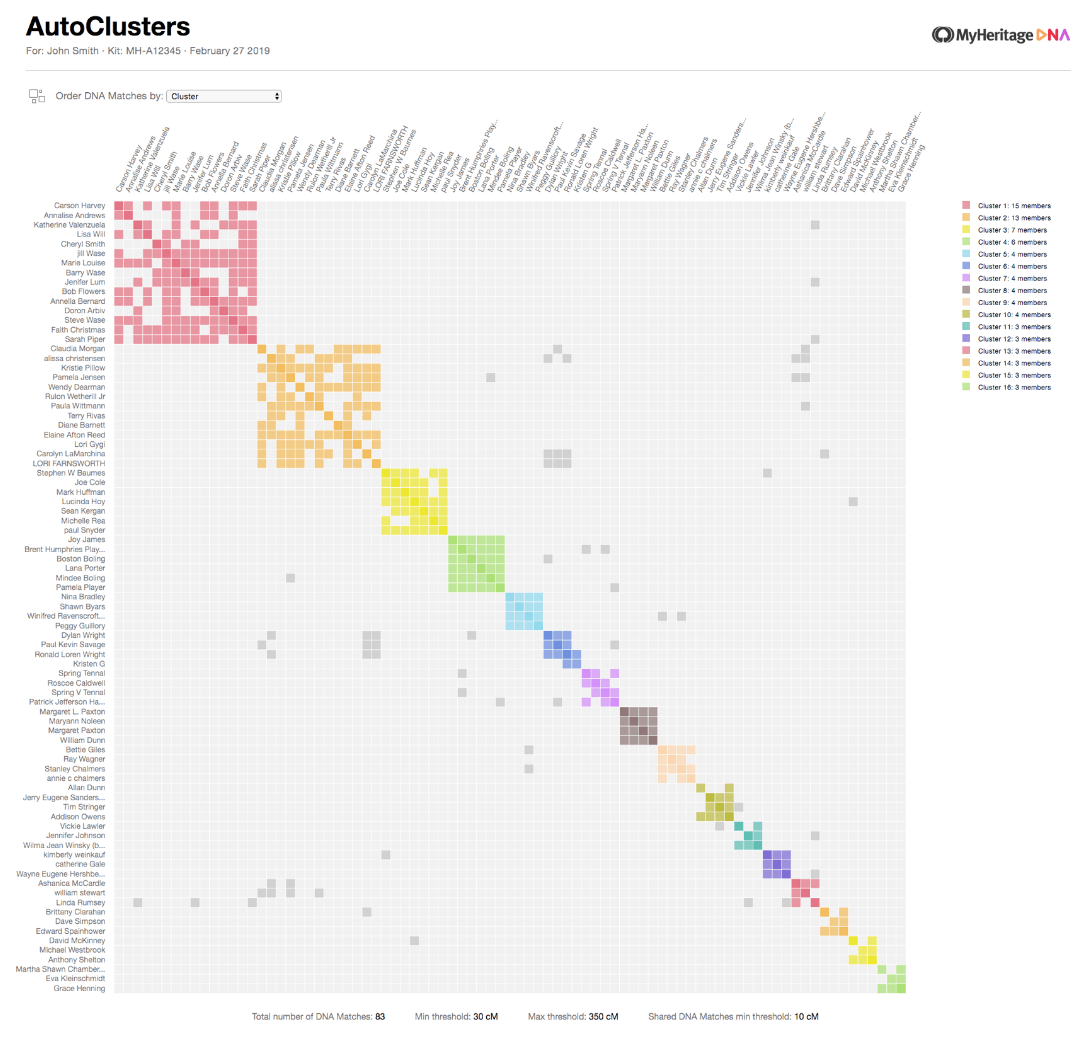
This approach is especially useful in cases where records are limited or missing altogether, such as with immigrant families or people affected by adoption or war.
Tools that connect DNA with family trees
MyHeritage enhances the process of tree-building by linking DNA results directly with family tree data. The Theory of Family Relativity™ feature leverages DNA, public trees, and historical records to propose likely relationship paths between you and a match — complete with documented evidence.
Meanwhile, Smart Matches™ automatically identify overlaps between your family tree and others on MyHeritage, suggesting new people to add or connections to verify. If you have any Smart Matches™ in common with a given DNA Match, they will appear on the Review DNA Match page. MyHeritage also draws relevant information from the DNA Match’s family tree, such as shared surnames and ancestral birthplaces, and displays them for comparison when you review a match. These features provide many different types of clues that can help you determine how you may be related to each other.
Ethical, emotional, and privacy considerations
Taking a DNA test can be an exciting and transformative experience… but it also invites a level of intimacy with your past that may bring surprises. While most users find joy, connection, and validation through DNA testing, it’s normal to feel a mix of curiosity and caution. Understanding what’s possible can help you approach the journey with clarity and confidence.
Sensitive discoveries and unexpected connections
DNA results can sometimes reveal events that were never documented or discussed in your family. You might discover previously unknown relatives: a half-sibling, a cousin through a hidden adoption, or a case of misattributed parentage. While these situations are not the norm, they are not uncommon either.
These revelations can bring up complex emotions. Some people feel shock or grief; others feel relief, validation, or a sense of closure. Many go on to build new relationships that become deeply meaningful. Some choose not to pursue a connection at all — which is entirely valid.
The key is: you are in control. If a DNA match takes you by surprise, there is no pressure to act on it. You can choose whether or not to initiate contact, and how to integrate that discovery into your life, if at all.
Respecting others’ privacy
It’s important to remember that the people you match with may be on their own journey, and they may not be ready to engage. When reaching out to DNA matches, lead with sensitivity and respect. Be open to the idea that not everyone will want to explore the connection right away — or ever.
How your data is used — and protected
At MyHeritage, user privacy is a top priority. Your DNA data is stored securely and kept completely separate from personally identifiable information. MyHeritage is the only consumer DNA company to date that has explicitly committed as part of its privacy policy never to sell or license DNA data to third parties.
Participation in DNA matching and tree comparisons is optional, and you can turn these features off at any time. You can also download your raw DNA data or delete it — and your entire account — whenever you choose. You are in control every step of the way.
The vast majority of people who take a DNA test find the experience enriching, empowering, and deeply rewarding. Millions of people around the world have chosen MyHeritage to help them explore their family history through DNA — and we take that trust seriously. Our commitment to privacy, security, and user control is at the heart of everything we do. You can feel confident knowing that your information is protected and that you are always in control of how it’s used.
Order a MyHeritage DNA kit now >>
Choosing the best DNA test for finding relatives, exploring ethnicity, or expanding your tree
Not all DNA tests are the same — and the best one for you depends on what you’re hoping to discover. Whether your goal is to find living relatives, explore your origins, or grow your family tree, certain features can make a big difference in the depth and usefulness of your results.
For connecting with relatives
If your primary goal is to find biological family or connect with cousins, look for a service that offers:
- A large and diverse user database, especially with international representation
- Accurate relationship estimates based on shared DNA and additional factors like age
- Tools to explore relationships, such as shared match lists, visual clusters, and messaging options
MyHeritage offers one of the most internationally diverse DNA databases available, with especially strong coverage in Europe and other non-U.S. regions. Tools like shared DNA Matches and Smart Matches™, shared ancestral surnames and places, AutoClusters, and Theory of Family Relativity™ help you make sense of your DNA matches and how they might connect to your tree.
For exploring ethnic and geographic origins
To understand where your ancestors came from, choose a test that includes:
- Broad regional coverage and detailed breakdowns
- A transparent and evolving methodology with regular estimate updates
- An engaging, easy-to-understand presentation of your results
MyHeritage provides ethnicity results across 79 ethnicities and 2,114 geographic regions — one of the most detailed offerings available. The animated reveal adds a personal, culturally rich touch to the experience.
For expanding and verifying your family tree
If you’re building or confirming a family tree, look for features that include:
- DNA-tree integration, allowing you to see how matches relate to your documented ancestors
- Smart suggestions for adding or verifying people in your tree
- Access to historical records that complement your DNA results
MyHeritage connects your DNA results directly to its tree platform and global record collections. Smart Matches™ and Theory of Family Relativity™ help you grow your tree confidently with connections that are backed by data.
Whatever your goals may be, choosing a DNA test with robust tools, clear insights, and strong privacy protections will help you get the most out of your journey.
Order a MyHeritage DNA kit now>>
What the research says: scientific studies and success rates
As DNA testing becomes an increasingly popular tool for exploring family history, a growing body of academic research is confirming what millions of users already know: these tests can have a powerful, lasting impact. Consumer DNA testing is helping people around the world rediscover their roots, clarify their family stories, and even reshape their sense of identity — often in ways that traditional records alone could never achieve.
DNA testing and personal identity
For many, taking a DNA test goes beyond the simple question of “Where am I from?” It becomes a deeply personal exploration of identity and belonging.
A 2022 study published in Genealogy (The Effects of DNA Test Results on Biological and Family Identities, Theunissen, 2022) found that DNA test results often influence how people view their biological and family identities, particularly when results reveal unexpected connections or challenge long-held assumptions.
“Overall, participants’ associations were positive and inquisitive. Despite some unexpected results, they all acknowledged new or different aspects of their identities, prompting some identity re-alignment… Individuals hold multiple identities, each with their own importance, and the participants were ultimately looking for some semblance of belonging or connection.” (Theunissen, 2022)
Similarly, research in the Journal of Community Genetics (Impacts of Personal DNA Ancestry Testing, Rubanovich et al., 2021) found that consumers were significantly more likely to trust DNA results than family lore or incomplete records — and that those results often prompted further exploration and self-reflection.
“The data suggest that the majority of participants were not distressed by their DNA ancestry results, yet many found the results to be impactful. Almost half of survey respondents indicated some change in their perception of their cultural roots, and nearly a quarter felt the results reshaped their cultural identity.” (Rubanovich et al., 2021)
Whether confirming a long-standing suspicion or revealing an entirely new branch of one’s heritage, DNA testing offers many users clarity where there was once uncertainty.
The power of DNA in family discovery
Beyond questions of identity, DNA testing has proven to be an invaluable tool for solving genealogical puzzles — especially for people with limited access to family information.
A 2019 Pew Research Center survey found that among U.S. adults who have used mail-in DNA testing services, 87% did so to learn more about their family origins, and 27% discovered close relatives they didn’t know about. These findings suggest that DNA testing is often motivated by a desire to learn more about family origins, and that a substantial portion of users discover previously unknown relatives as a result.
Additionally, a 2018 study in Molecular Genetics & Genomic Medicine (Consumer use and response to online third-party raw DNA interpretation services, Wang et al., 2018) noted that users frequently turn to third-party tools to interpret raw DNA and identify matches, and were overwhelmingly happy with the results:
“Overall, consumers were overwhelmingly happy with their decision to use third-party raw DNA interpretation services. Moreover, 81% reported being very satisfied or satisfied with the interpretation results they received.” (Wang et al., 2018)
This observation underscores the value of platforms like MyHeritage that offer integrated cousin-matching, shared segments, and visual clustering features to help users understand how they’re connected.
High satisfaction and growing global use
It’s no surprise that satisfaction with DNA testing is high. As shown in the 2018 study referenced above, the majority of users reported feeling satisfied with their experience. This widespread sense of value and engagement reflects how meaningful DNA testing can be — not just for answering questions, but for inspiring users to explore their heritage more deeply and make new discoveries about their family history.
With more than 40 million people having taken at-home DNA tests as of 2025, the movement is only growing. And with the right tools, that growth translates into greater potential for meaningful matches and discoveries for everyone.
Scientific research continues to confirm what many have experienced firsthand: DNA testing opens doors not just to the past, but to understanding, connection, and self-discovery in the present.
Frequently asked questions about DNA testing for genealogy
What’s the best DNA test for finding relatives?
The best DNA test for finding relatives is the autosomal DNA test, like that offered by MyHeritage. This type of test identifies relatives from both sides of your family and gives you the best chance of discovering relatives relevant to your research.
Can DNA testing help me if I’m adopted?
Yes — DNA testing is an extremely powerful tool for locating biological family members. Countless families affected by adoption have been reunited thanks to DNA testing.
How accurate are ethnicity estimates?
Ethnicity estimates are based on comparing your DNA to reference populations from around the world, and while they are scientifically grounded, they are still estimates. Your results can change over time as databases grow and algorithms improve. MyHeritage offers one of the most detailed ethnicity reports available, analyzing 79 ethnicities and over 2,100 geographic regions. While not always perfectly precise, ethnicity estimates offer a reliable, research-based snapshot of your deeper ancestral origins.
How does DNA matching work?
DNA matching compares your genetic data with others in the database to find people who share segments of DNA with you, indicating a common ancestor. The more DNA you share — measured in centimorgans (cM) or percentages — the closer your likely relationship. MyHeritage enhances this process with tools like Shared Matches, AutoClusters, and Theory of Family Relativity™ to help you interpret your matches and understand how you might be related.
Is my data safe with MyHeritage?
Yes. MyHeritage prioritizes user privacy and data protection. Your DNA results are stored securely, separate from personally identifiable information, and are never sold or licensed to third parties. You have full control over your data at all times — including the ability to download your raw data or delete it permanently. Participation in features like DNA Matching is entirely optional, and you can adjust your settings at any time.
Bringing it all together
At its heart, family history is about understanding who we are and how we came to be. DNA testing offers a powerful way to deepen that understanding. It brings scientific insight into the story of your heritage, helping to fill in the blanks where records fall short and adding new dimensions to the names, dates, and places that shape your tree.
This journey of discovery begins with tracing your heritage, but ultimately, it can lead you to find connection, meaning, and belonging. For many people, it forges relationships with relatives they never knew existed, helps confirm stories passed down through generations, or opens entirely new chapters that had been hidden until now.
Whether your goal is to build out your family tree, explore your ethnic origins, verify historical connections, or solve longstanding mysteries, DNA testing can help you get there. And with tools that integrate DNA with family trees, historical records, and advanced matching features, it’s easier than ever to make sense of your results and turn them into real discoveries. Users find the experience to be rewarding, empowering, and deeply personal.
Taking a DNA test is a small step, but it can open a door to something far greater. Millions of people around the world have already taken that step, and many have found new purpose, connection, and insight along the way. Wherever you are in your family history journey, DNA can help you see the story more clearly — and perhaps uncover chapters you never knew were there.
Ready to explore your story through DNA?
Join millions of users who’ve made meaningful family discoveries with MyHeritage DNA.
